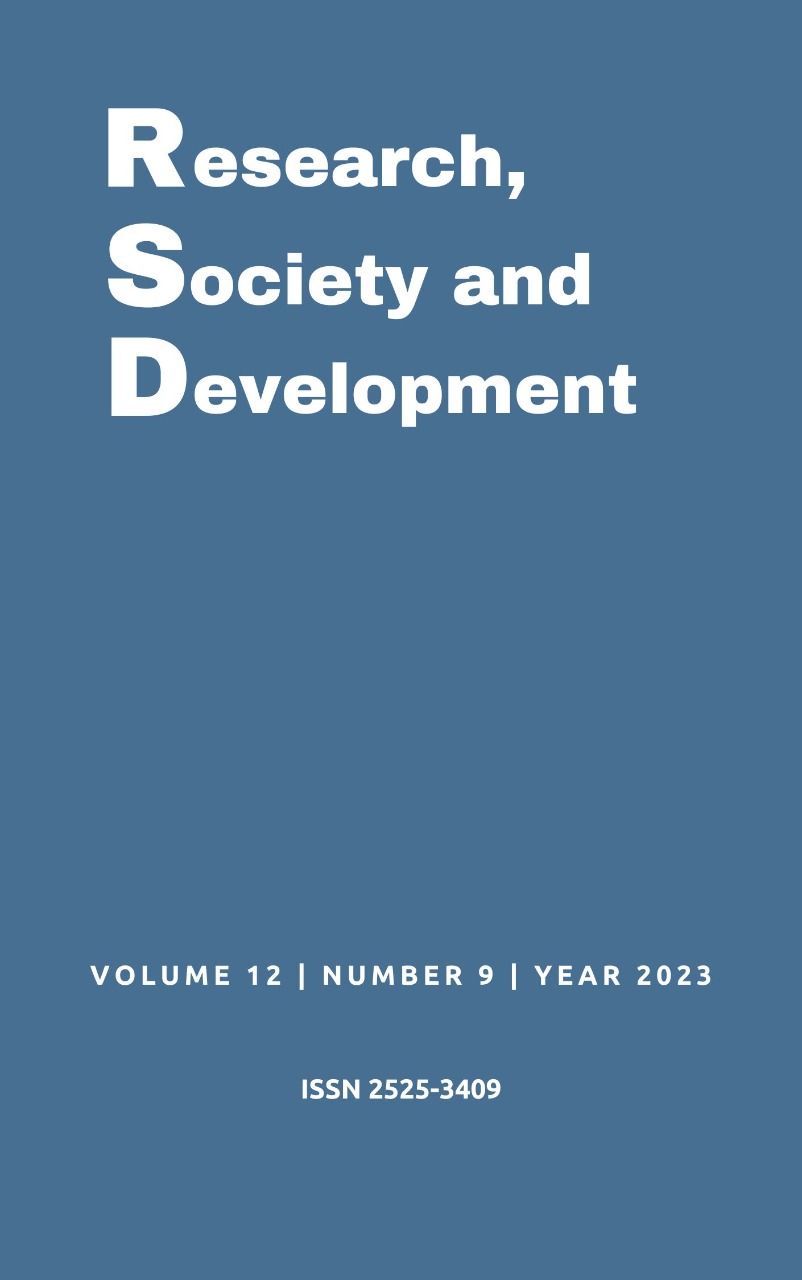Possibilities of use of passiflora incarnata from a phytochemical and pharmacological perspective
DOI:
https://doi.org/10.33448/rsd-v12i9.43008Keywords:
Medicinal plants, Anxiolytic plants, Passiflora, Passiflora incarnata.Abstract
The objective of this study is “Possibilities of using Passiflora from a phytochemical and pharmacological point of view”. Carry out historical research on the use of this plant species, investigate and describe the purposes and indications for its use as pharmacotherapy, and provide guidance on the possible consequences associated with its use or misuse, taking into account the adverse and toxicological effects reported. effects. Among these properties and uses, there are anxiolytic, sedative and antispasmodic effects. Its effects were obtained through the extract of secondary metabolites found in different parts of the plant such as roots, bark, stem, leaves and flowers. The research presented here prioritizes the discovery of essential knowledge about the uses of Passiflora incarnata, and thus assumes great importance and complexity, as it is a species of Passiflora that is not cultivated in Brazil and has a broad spectrum of pharmacological activity.
References
Cristiano, M. A. O. et al. (2014) Evaluation of the use of herbal medicines: ginseng, passion fruit and valerian in a drugstore in Aurilândia-Goiás. Revista Faculdade Montes Belos (FMB), 7(2) 71-87.
Dantas, L. P. (2014) Effects of Passiflora incarnata and Midazolam on anxiety control in patients undergoing impacted third molar extraction. Dissertation (master’s degree in Dentistry) – Federal University of Sergipe 1-74.
Eich, L. (2011). Validation of the dosage of Passiflora incarnata dry extract 3.5% calculating total flavonoids expressed in vitexin by UV-visible absorption spectroscopy. nilasalle, La Salle University Center, 9-17.
Faustino, T. T. et al. (2010). Medicinal plants in the treatment of generalized anxiety disorder: a review of controlled clinical studies. Brazilian Journal of Psychiatry, 32(4)431-432.
Flambó, D. F. A. L. P. (2013) Biological Activities of Flavonoids: Antimicrobial Activity. Fernando Pessoa University, Faculty of Health Sciences, 2-24.
Gazola, A. C., et al. (2015) Involvement of GABA ergic pathway in the sedative activity of apigenin, the main flavonoid from Passiflora quadrangularis pericarp. Brazilian Journal of Pharmacognosy, 25(2), 158-163.
Gosmann, G. et al. (2011) Chemical composition and pharmacological aspects of Passiflora L. (Passifloraceae) species. Brazilian Journal of Biosciences, 9, 88-99.
Kynris, E.; Coleman, E.; Rothenstein, E. (2009) Natural Remedies for Anxiety Disorders. Depression. Anxiety, 26(2), 259–265.
Leal, A. E. B. P., et al. (2016) Anxiolytic and sedative activity of species of the genus Passiflora – A scientific and technological mapping. Cad. Prospec, 9(3), 323-336.
Lopes, A. C. W. C. (2013) Development and validation of analytical methodology for Passiflora incarnata Lineaus extract. Postgraduate Program in Pharmaceutical Sciences, UFRS, 40-81.
Marmitt, D. J. et al. (2015) Medicinal plants from the National List of Medicinal Plants of Interest to the Unified Health System (RENISUS) with antifungal potential. Rev. Bras. Research Health, 17(3) 1-12.
Monteiro, M. H. D. A.; & Fraga, S. A. P. M. (2015) Phytotherapy in dentistry: survey of the main products of plant origin for oral health. Revista Fitos. (4), 253-303.
Nascimento, D. F. et al. (2009) Clinical toxicology study of a herbal medicine containing Passiflora incarnata L., Crataegus oxyacantha L., Salix alba L. in healthy volunteers. Revista Brasileira de Farmacognosia, 4(9) 61-63
Sousa, R. F. et al. (2018) Anxiety: general aspects and treatment with a focus on plants with anxiolytic potential. Revinter, 11(1), 33-54.
Tonin, F. B. (2010) Propagation of Passiflora incarnata using root cuttings. Faculty of Agricultural Sciences, Botucatu Campus, Universidade Estadual Paulista, 5-41.
Zeraik, M. L. et al. (2010) Passion fruit: a functional food. Rev. Bras. Farmagn, 20(3), 59-471.
Nascimento, D. F. et al. (2009) Clinical toxicology study of a herbal medicine containing Passiflora incarnata L., Crataegus oxyacantha L., Salix alba L. in healthy volunteers. Brazilian Journal of Pharmacognosy, 3(5) 1-10.
Faustino, T. T.; Almeida, R. B.; & Andreatini, R. (2010) Medicinal plants in the treatment of generalized anxiety disorder: a review of controlled clinical studies. Brazilian Journal of Psychiatry, 32(4) 1-10.
Gosmann, G. et al. (2011) Chemical composition and pharmacological aspects of Passiflora L species. (Passifloraceae). Brazilian Journal of Biosciences 9(1), 88-99.
Fonseca, L. R. (2013) Development of an oral solution based on Passiflora incarnata. Institute of Pharmaceutical Technology – Osvaldo Cruz Foundation, 2(4): 71-78
Dantas, L. P. (2014) Effects of Passiflora incarnata and Midazolam on anxiety control in patients undergoing extraction of impacted third molars. Postgraduate program in dentistry, Federal University of Sergipe, 1-15.
Monteiro, M. H. D. A., & Fraga, S. A. P. M. (2015) Phytotherapy in dentistry: surveys of the main products of plant origin for oral health. Fitos Magazine,.9(4), 253-303.
Lopes, M. W.; Tiyo, R.; Arantes, V. P. (2017) Use of Passiflora incarnata in the treatment of anxiety. UNINGÁ Review Magazine. 29(2), 81-86.
Silva, M. H. R. (2017) Endophytic Fungi associated with Passiflora incarnata and Assessment of their biotechnological potential. Master's Thesis, presented to the Institute of Biosciences.
Downloads
Published
Issue
Section
License
Copyright (c) 2023 Cícero Geison Pereira Dias; Damião Junior Gomes; Lindolfo Joaliff Carlos Dias; Miquéias Nunes da Silva; Renato Bernardo Silvino; Paulo Clecimar de Alexandria Júnior ; Alysson Bruno Santos Furtado; Paloma Irys da Conceição; Daniella Silva Nogueira ; Gabriela Barros da Silva

This work is licensed under a Creative Commons Attribution 4.0 International License.
Authors who publish with this journal agree to the following terms:
1) Authors retain copyright and grant the journal right of first publication with the work simultaneously licensed under a Creative Commons Attribution License that allows others to share the work with an acknowledgement of the work's authorship and initial publication in this journal.
2) Authors are able to enter into separate, additional contractual arrangements for the non-exclusive distribution of the journal's published version of the work (e.g., post it to an institutional repository or publish it in a book), with an acknowledgement of its initial publication in this journal.
3) Authors are permitted and encouraged to post their work online (e.g., in institutional repositories or on their website) prior to and during the submission process, as it can lead to productive exchanges, as well as earlier and greater citation of published work.


